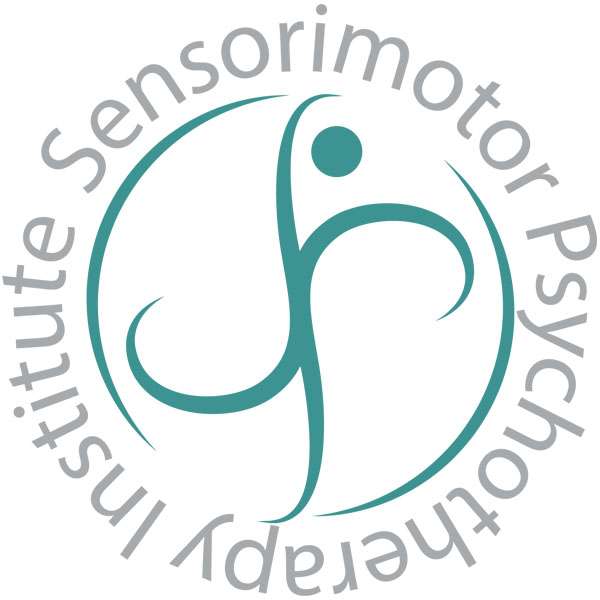
Sensorimotor Psychotherapy™ is a body-centered approach that aims to treat the somatic symptoms of unresolved trauma. While traditional talk therapies utilize the words of a person as the entry point for treatment, this type of therapy depends on the bodily experiences of the individual as a gateway to awareness and improved mental health.
Proponents of Sensorimotor Psychotherapy™ hold that traumatic experiences may become trapped deep within the body, with those who are affected sometimes completely unaware of the existence of unresolved trauma. Traditional talk therapies may fail to unearth these unconscious issues.
Therapists trained in sensorimotor therapy techniques can help an individual begin to heal by helping that person re-experience, in a safe environment, the physical sensations associated with a traumatic event.
The Development of Sensorimotor Psychotherapy
Pat Ogden—the major pioneer of sensorimotor psychotherapy—first became fascinated with the relationship between a person’s body and mind while serving as a technician and yoga instructor at a psychiatric hospital in the 1970s. She noted that people seeking treatment often seemed to disconnect their mental health issues from their physical sensations and patterns. Dr. Ogden perceived that many people in therapy tended to relive past painful experiences, making these observations even before posttraumatic stress (PTSD) was listed in the Diagnostic and Statistical Manual of Mental Disorders. Having analyzed the therapeutic techniques available at the time, Dr. Ogden recognized that many types of treatment only served as triggers that led individuals to re-experience traumatic events.
Having discerned the link between mental health and the body, Dr. Ogden took the first steps toward the development of sensorimotor psychotherapy by combining techniques from psychotherapy and somatic therapy. This decision was influenced by Ogden’s desire to develop a comprehensive approach to remedy the apparent disconnect between mind and body during the healing process.
After collaborating with Ron Kurtz—the original developer of the Hakomi method—for many years, co-founding the Hakomi Institute, Dr. Ogden founded her own training organization in 1981. Today, that organization is known as the Sensorimotor Psychotherapy Institute.
Find a Therapist
Advanced Search
Sensorimotor psychotherapy combines somatic therapies, attachment theory, cognitive applications, neuroscience, and techniques from the Hakomi method. Since its inception, the approach has garnered international acclaim. Dr. Ogden’s 2006 book on her method, Trauma and the Body: A Sensorimotor Approach to Psychotherapy , has also gained international success.
Other major contributors to the development of sensorimotor psychotherapy include Clare Pain, Janina Fisher, Ruth Lanius, Allan Shore, Bessel van der Kolk, Onno van der Hart, and Ellert Nijenhuis. At present, Dr. Ogden and her colleagues are developing sensorimotor psychotherapeutic techniques to be used by children, teens, families, and couples.
Progression of a Sensorimotor Psychotherapy Session
The sensorimotor approach utilizes a person’s physical, mental, and emotional states in order to gently manage and relieve the physical sensations associated with trauma. During traumatic situations, the body may react in specific ways (fight, freeze, or flight) in order to maximize the likelihood of survival. However some of these health-promoting responses may not have been completed or even attempted during a past traumatic event (for example, a victim of domestic abuse may have decided not to fight back). These unfulfilled responses may become stuck in the affected person’s nervous system, possibly leading to physical mannerisms (such slouching, shaking, or nervous tics) or feelings of anxiety, depression, helplessness, and isolation.
Sensorimotor psychotherapy helps the individual in therapy re-experience the traumatic event in a safe environment and carry out any previously unfulfilled actions in order to achieve a feeling of completion and closure. Details of the trauma do not necessarily need to be recalled for the treatment to be effective.
The progression of a therapy session may vary, depending on the needs and trauma-processing capacity of a person seeking treatment as well as the therapist’s skill and level of training. For the most part, there are three major steps toward promoting better health:ther
- Step 1: Establish a place of safety. This is considered to be important as it can allow an affected individual to become better able to focus on movements, impulses, and physical sensations in a setting where it is possible to feel protected. Personal awareness of body positions, gestures, and even breathing patterns is increased. This environment helps to highlight the body’s response to specific memories, thoughts, and emotions.
- Step 2: If the person in therapy is ready to speak about the trauma experienced, the therapist may ask the individual to recall the time period leading up to the incident and to take special note of any emotional changes and bodily responses currently being experienced. For example, if the individual reports anger, the therapist may ask where in the body that anger is felt. “Is it felt between your eyes, in the throat, or in the chest, perhaps? Do you feel your breathing rate increasing?” As understanding of the body’s language increases, the therapist may be able to assist the individual in the process of reintegrating these sensations into a vivid recollection of the traumatic event.
- Step 3: The individual is helped to complete any desired movement or action that may have been truncated in the past. For a person who experienced domestic violence this may involve raising an arm in defense, for a victim of childhood sexual abuse it may involve finally saying the word “NO.” These exercises can help the person in therapy savor a feeling of triumph as it becomes possible to move past these traumatic memories and set aside fears. The individual in therapy will ideally experiences the calmness and lightness associated with overcoming trauma.
Through sensorimotor therapy, people are often able to develop a greater sense of control over their responses to trauma-related triggers, become more aware of the ways that trauma can affect mind and body, learn to differentiate between past and present, and develop the ability to pay attention to personal thoughts and somatic experiences without being overwhelmed by a traumatic event.
Who Can Sensorimotor Psychotherapy Benefit?
Due to its gentle but powerful approach, sensorimotor psychotherapy is often an effective form of treatment for adults who have survived childhood trauma. The therapist will repeatedly ask permission before conducting each experiment or therapeutic technique.
The effectiveness of the approach is supported by neuroscience research. The approach may be beneficial to those who have experienced:
Somatic Healing and Sensorimotor Psychotherapy
During sensorimotor psychotherapy sessions, people in treatment are encouraged to yield to the somatic experience and allow themselves to be guided along a journey of self-discovery with their own body as the vehicle. By using somatic interventions and strategies, sensorimotor psychotherapy creates a dynamic and effective body therapy that allows people in therapy to draw strength from their own inner resources.
Many people who have experienced difficulty recovering from traumatic situations have found that sensorimotor psychotherapy techniques provide relief. As the emotional and cognitive processing centers are indirectly accessed through this form of therapy, those who did not see improvement after directly accessing these centers (perhaps due to the cognitive and emotional challenges of processing and speaking about severe trauma) may obtain benefit from sensorimotor psychotherapy. The somatic experience allows a person in therapy to treat the source of the trauma, which can result in improved cognitive and emotional function.
Limitations of Sensorimotor Psychotherapy
Typically, for sensorimotor psychotherapy to be effective, the person in treatment must be able to develop body awareness and mindfulness. As people may often become overwhelmed when re-experiencing past trauma, a therapist generally must proceed cautiously when deciding which methods will be most effective for treatment.
People who have a phobia of body or inner awareness may first need to experience some form of desensitization in order to benefit from this therapeutic approach.
References:
- Elaine, M. (2013). Analysis of the real world application of sensorimotor psychotherapy for the treatment of complex trauma. Master of Social Work Clinical Research Papers. Paper 172. Retrieved from http://sophia.stkate.edu/cgi/viewcontent.cgi?article=1173&context=msw_papers
- Felber, M. (n.d.). What is sensorimotor psychotherapy? Retrieved from http://www.marriagecpr.com/sensorimotor-therapy.html
- Fisher, J. (2011). Sensorimotor approaches to trauma treatment. Advances in Psychiatric Treatment, 17(3), 171-177. Retrieved from http://apt.rcpsych.org/content/17/3/171
- Fisher, J., Ogden, P., & Pain, C. (2006). A sensorimotor approach to the treatment of trauma and dissociation. Psychiatric Clinics of North America, 29(1), 263-279. Retrieved from http://70-40-200-36.bluehost.com/documents/P.Ogden_ClinArticle.pdf
- Sensorimotor Psychotherapy Institute. (n.d.). History of sensorimotor psychotherapy. Retrieved from https://www.sensorimotorpsychotherapy.org/about.html
In the 1970s, Pat Ogden began paying attention to the connection between her clients’ dissociations from their bodies and their psychological concerns. With the development of sensorimotor psychotherapy, a client is able to examine how past traumatic experiences are affecting them somatically. This form of trauma treatment addresses physical symptoms, especially those of a dissociative nature such as bodily anesthesia or motor inhibitions, which can cause difficulties in emotion regulation, cognitions, and daily functioning.
When words are not enough to help a client heal, a somatic approach to trauma treatment can be effective. Traditional psychotherapy focuses on the cognitive or emotional aspects of the individual, but such an approach is limited. Sensorimotor psychotherapy joins cognitive and somatic techniques. This is important in treatment as trauma itself can have an overwhelming effect on the body and can manifest as somatic symptoms.
The Trauma and Mental Health Report recently spoke with Susan Lucas, a sensorimotor psychotherapy Level II graduate.
Q: What is sensorimotor psychotherapy?
A: Sensorimotor psychotherapy is body-based talk therapy, integrating current findings from neuroscience to transform traumatic memories into strengths and resources for the client. It works with developmental trauma, such as maternal lack of attunement, as well as acute or gross trauma like sexual abuse, violence, or verbal abuse. Sensorimotor therapists work on mindfulness and collaboration with the client, repeatedly asking permission to do each experiment or process along the way.
Q: What is involved in a typical therapy session?
A: Therapy sessions vary widely. They depend on the needs of the client and the capacity to process traumatic material as well as the level of training or skill the therapist has. If a client wants to speak about a traumatic incident, for example witnessing a fight between two older siblings, a therapist would ask the client to recall up to a few moments before the actual incident.
The therapist would then help the client get into a mindful state by asking them to notice certain things: If they are upset, what is it in their body that tells them they are upset? Is it a tightening in the stomach? Or a dark feeling in the chest? Then the therapist asks the client to focus on those sensations, and by observing the client’s gestures and postures, find out what movement the client would have liked to have made, but couldn’t.
The therapist finds a way in the session for the client to complete the movement that was truncated, thus giving them an experience of triumph, which they can savor and integrate into their nervous system. The therapist might then complete the process by speaking to the younger self of the client, saying something like, “Look at your younger self in your mind’s eye, I’m going to say some words in a moment, and I want you to just notice how your younger self responds.” The therapist speaks slowly, saying, “I don’t know why your brother and sister were fighting, but I do know that all little children deserve to feel safe and secure in their home.”
Q: Which client populations would benefit from sensorimotor psychotherapy?
A: I would say that anyone who is having difficulties in their life, such as anxiety, depression, anger management, inability to sustain meaningful relationships, could benefit from sensorimotor psychotherapy. Clients who abuse alcohol or drugs could benefit from sensorimotor in tandem with addiction treatment.
Q: How would an individual who has experienced trauma benefit from sensorimotor psychotherapy?
A: Sensorimotor psychotherapy emphasizes helping clients develop resources within themselves to be able to self-regulate affect, or to move out of the fight/flight/freeze response and into a higher-functioning mode where they can think clearly and feel appropriately. Clients can become less reactive and more proactive in their relationships, work, and families. They also benefit by developing the ability to regulate interactively with others.
A traumatic experience can damage implicit processes such as regulating emotions, being able to engage with others, and defense mechanisms against threat. After experiencing a traumatic event, an individual’s relationship with their body may be impacted. For example, the nervous system may not regulate emotions effectively, causing feelings of vulnerability, being overwhelmed, or frightened.
There are three phases in sensorimotor psychotherapy:
- Stabilization and symptom reduction
- Working with traumatic memory
- Re-integration
The body reading technique in Phase 1 allows the therapist to assess stable somatic abilities such as grounding in the legs or breathing fully. The therapist makes note of any abilities that are absent, which then will be taught to the client.
The body reading intervention is used again in Phase 2 to assess mobile defensive responses that were not carried out at the time of the trauma. The therapist helps the client to complete these defensive responses through awareness of the body. When the new reactions to the traumatic event are completed, these previously powerless responses elicit feelings of empowering triumph.
In Phase 3, body reading assesses any beliefs a client holds that interfere with daily functioning. In Pat Ogden’s Trauma and the Body, an example is provided where a client’s cognitive distortion “I’m worthless, I must hide” is reflected in bodily tension such as the pulling in of the shoulders or a spinal curve (p. 273).
Sensorimotor psychotherapy builds on traditional methods, allowing a trained psychotherapist to incorporate these somatic interventions into their therapeutic orientation of choice. It can then be integrated with a cognitive/emotional therapeutic treatment model in order to increase effectiveness in coping with traumatic experiences.
An integrative model can be significant in its focus on a client’s symptoms through cognitions, emotions, and the underlying bodily communication that exists without words.
Reposted from the online magazine, “The Trauma & Mental Health Report.” Contributing Writer: Amanda Bartella; Chief Editor: Robert T. Muller.




